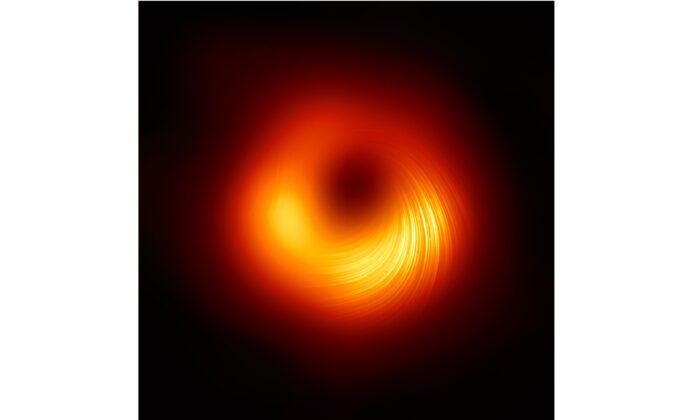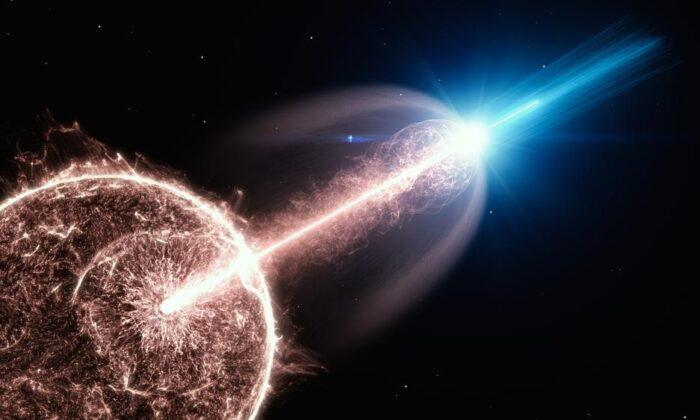Astronomers from the Event Horizon Telescope (EHT) collaboration have produced the first-ever polarized picture of a black hole.
In 2019, the same team obtained the first-ever image of a black hole. Both images were taken of the same object in the center of the M87 galaxy.
The 2019 image, which shows a bright ring-like structure with a dark central region that is the black hole’s shadow, marked a major step forward in our knowledge of these exotic astrophysical objects.
Two years later, the new image with polarization information has been released.
“We are now seeing the next crucial piece of evidence to understand how magnetic fields behave around black holes, and how activity in this very compact region of space can drive powerful jets that extend far beyond the galaxy,” said Monika Mościbrodzka, Coordinator of the EHT Polarimetry Working Group, in the statement.
Polarization is a property of light in which it prefers to oscillate in a specific direction. It has wide applications in everyday life, from 3D movie glasses to polarized sunglasses that help filter out glare.
It can also be a powerful tool for astronomers, because it reveals the magnetic field structure in very powerful magnetized plasma.
“The newly published polarised images are key to understanding how the magnetic field allows the black hole to ‘eat’ matter and launch powerful jets,” said EHT collaboration member Andrew Chael in the statement.
The M87 black hole is a very active and extreme one, because it consumes a huge amount of the surrounding matter and launches a relativistic plasma jet. The jet is very bright and can extend to thousands of light-years from the black hole.
However, the jet’s origin remains mostly unknown to astronomers. In particular, the size of the jet can exceed the size of the M87 galaxy, but it comes from a tiny region that is smaller than our solar system.
In addition, the radiation mechanism that makes the polarized light from the black hole, the electron synchrotron, is a crucial radiation process that happens in nuclear reactors. It is important to scientists to understand this physical mechanism in extreme environments such as the neighborhood of a black hole.
“The observations suggest that the magnetic fields at the black hole’s edge are strong enough to push back on the hot gas and help it resist gravity’s pull. Only the gas that slips through the field can spiral inwards to the event horizon,” explained Jason Dexter, coordinator of the EHT Theory Working Group, in the statement.
To observe the M87 black hole, the EHT collaboration linked eight telescopes around the world, including the Atacama Large Millimeter/submillimeter Array (ALMA) and the Atacama Pathfinder Experiment (APEX), to create a virtual Earth-sized telescope. Using an advanced technique called radio interferometry, the resolution of the EHT is able to see an object the size of a credit card on the surface of the moon.
“ALMA data were also crucial to calibrate, image and interpret the EHT observations, providing tight constraints on the theoretical models that explain how matter behaves near the black hole event horizon,” said Ciriaco Goddi, a scientist at Radboud University and Leiden Observatory, Netherlands, in the press release.
“The EHT is making rapid advancements, with technological upgrades being done to the network and new observatories being added. We expect future EHT observations to reveal more accurately the magnetic field structure around the black hole and to tell us more about the physics of the hot gas in this region,” said EHT collaboration member Jongho Park in the press release.
Video credit: ESO




